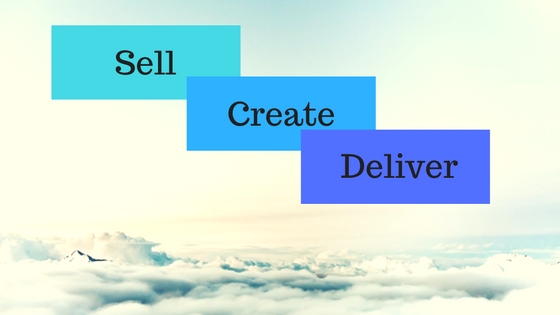Me: Hey, what’s happening these days?
Friend: We are working on a new product.
Me: That’s cool. What is it?`
Friend: Sorry, it’s a secret. We are working in stealth mode and will launch big in 10 months.
Me: Hmm…
The whole conversation just got me thinking that a lot of people come up with business ideas. Ideas with a negligible addressable market.
You will hear this often, “My website or product has to be perfect before I do a big product launch”.
Let’s face the reality, the market changes so rapidly that working in stealth mode for 10 months might just leave you with a lot of time and money wasted.
The number one reason for startup failure is building products that nobody wants. This research shows the top 20 reasons for startup failures, citing ‘No Market Need’ as the number one reason.
It’s a common myth that you need to build a product before you start selling it. That’s not the case.
Launching a new product is like gambling, it’s risky. I get it.
The process of selling before building a product reduces the risk to a certain extent.
How much you sell your product for is insignificant.
If you have some buy-in in terms of cash before you even build the product, it will validate your idea and quantify that the product will sell once you launch it.
Some people might confuse this with the lean methodology. The idea is to push the MVP concept even further. The idea is to sell a product even before you create the MVP (Minimum Viable Product).
Here’s the typical product development cycle that is taught in most B-Schools:
- Idea
- Prototype
- Test
- Feedback
- Build
- Launch
- Profit
It’s flawed.
So, how do you go beyond the MVP or Lean Startup concept?
By selling your idea first.
- Idea
- Sell
- Create
- Proto
- Test
- Deliver
- Build
- Launch
Don’t get me wrong. The traditional way of building the products work but it puts you at a high risk. The risk of no one actually buying the product once you build it.
If we skew the development process a bit and take the launch and profit part to the top, it validates whether you are creating the right product or not.
The new technique helps you mitigate the risk and allows you to know about the success or failure without having to wait.
It is about increasing your odds of winning.
The strategy of selling the product before it really exists is an effective way to launch with minimum losses and maximize possible gains.
Case Study
For one of the SaaS product that I built, I wanted to get 8 to 10 first customers, before going-all-in with the resource, time and money investment.
The team circled up to think about the core value proposition for which people would be willing to pay today, rather than thinking about various features or benefits.
How much the first customers would pay, was insignificant at this point. We just wanted their buy-in.
We figured that it would take at least 4 weeks to get the MVP (prototype) up and running. So I started the sales and MVP development process in parallel.
Here’s the step by step process I followed before building the product:
-
- Created a landing page.
- Started the Ads.
- Emailed the potential prospects.
- Emailed my previous contacts.
- Jumped on the call with each one.
- Discussed their pain points.
- Talked about the possible solution.
- Sold the solution with a 4-week delivery.
- Closed the calls, with cash-in.
No, it was not easy but by gaining their confidence and using the right closing techniques you will manage to find your early adopters.
Not only were these our first customers, but they also helped us:
- Create the product roadmap.
- Became our Beta users.
- Provided feedback for the MVP/ POC.
- Shared us the actual pain-points.
- Gave confidence to the team working on the product.
- Became our first paid customers.
The process of selling before creating the product may vary but the essence remains the same. For some, you can create a cool video, presentation or hold a webinar and for others, you create a POC (proof of concept) before you sell.
I have followed this process for many other (successful & failed) products and it has surely minimized my losses and saved time.
Take the Jump. It always seems impossible until it’s done. – Nelson Mandela

